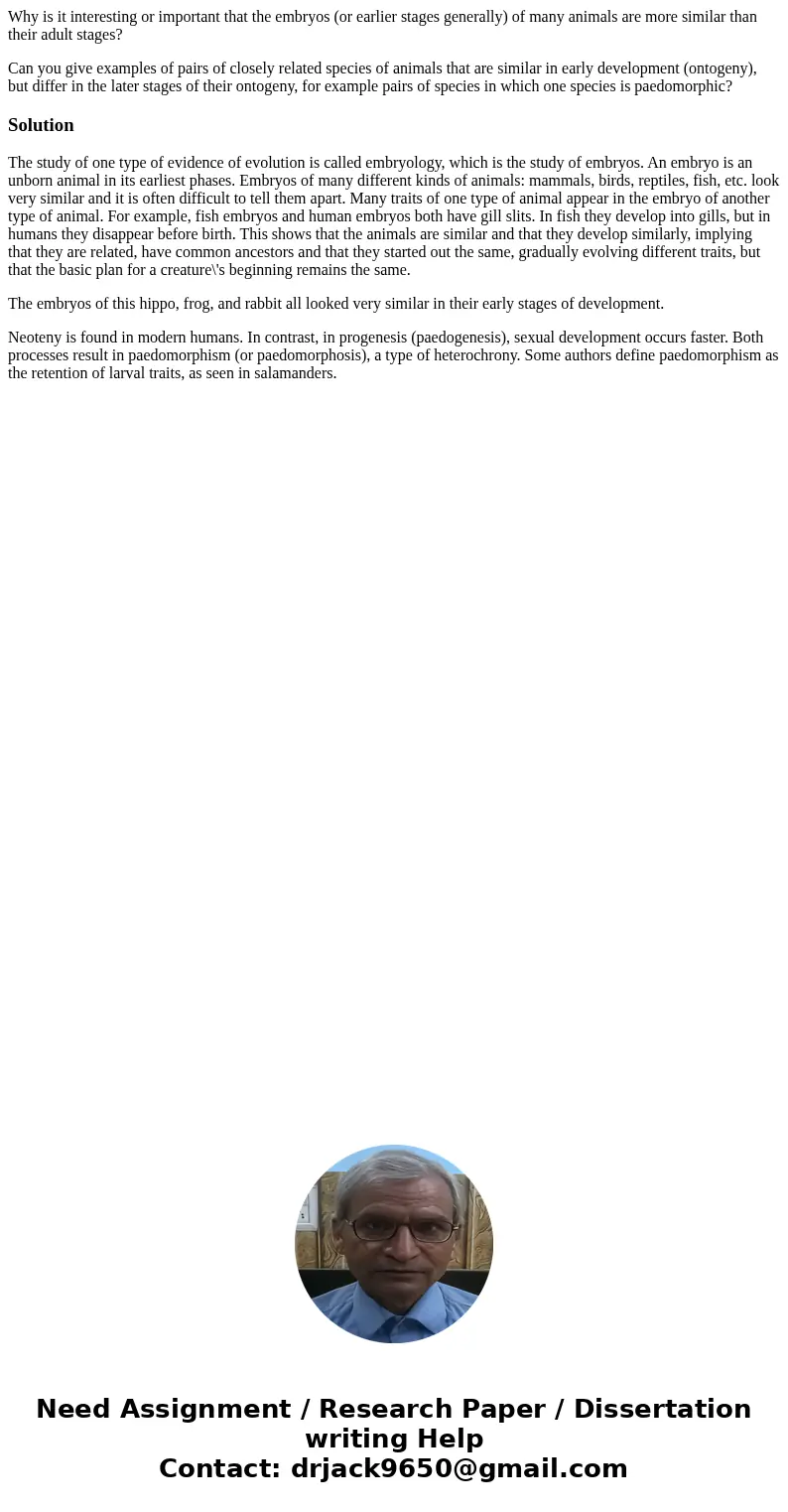Why is it interesting or important that the embryos or earli
Why is it interesting or important that the embryos (or earlier stages generally) of many animals are more similar than their adult stages?
Can you give examples of pairs of closely related species of animals that are similar in early development (ontogeny), but differ in the later stages of their ontogeny, for example pairs of species in which one species is paedomorphic?
Solution
The study of one type of evidence of evolution is called embryology, which is the study of embryos. An embryo is an unborn animal in its earliest phases. Embryos of many different kinds of animals: mammals, birds, reptiles, fish, etc. look very similar and it is often difficult to tell them apart. Many traits of one type of animal appear in the embryo of another type of animal. For example, fish embryos and human embryos both have gill slits. In fish they develop into gills, but in humans they disappear before birth. This shows that the animals are similar and that they develop similarly, implying that they are related, have common ancestors and that they started out the same, gradually evolving different traits, but that the basic plan for a creature\'s beginning remains the same.
The embryos of this hippo, frog, and rabbit all looked very similar in their early stages of development.
Neoteny is found in modern humans. In contrast, in progenesis (paedogenesis), sexual development occurs faster. Both processes result in paedomorphism (or paedomorphosis), a type of heterochrony. Some authors define paedomorphism as the retention of larval traits, as seen in salamanders.

 Homework Sourse
Homework Sourse